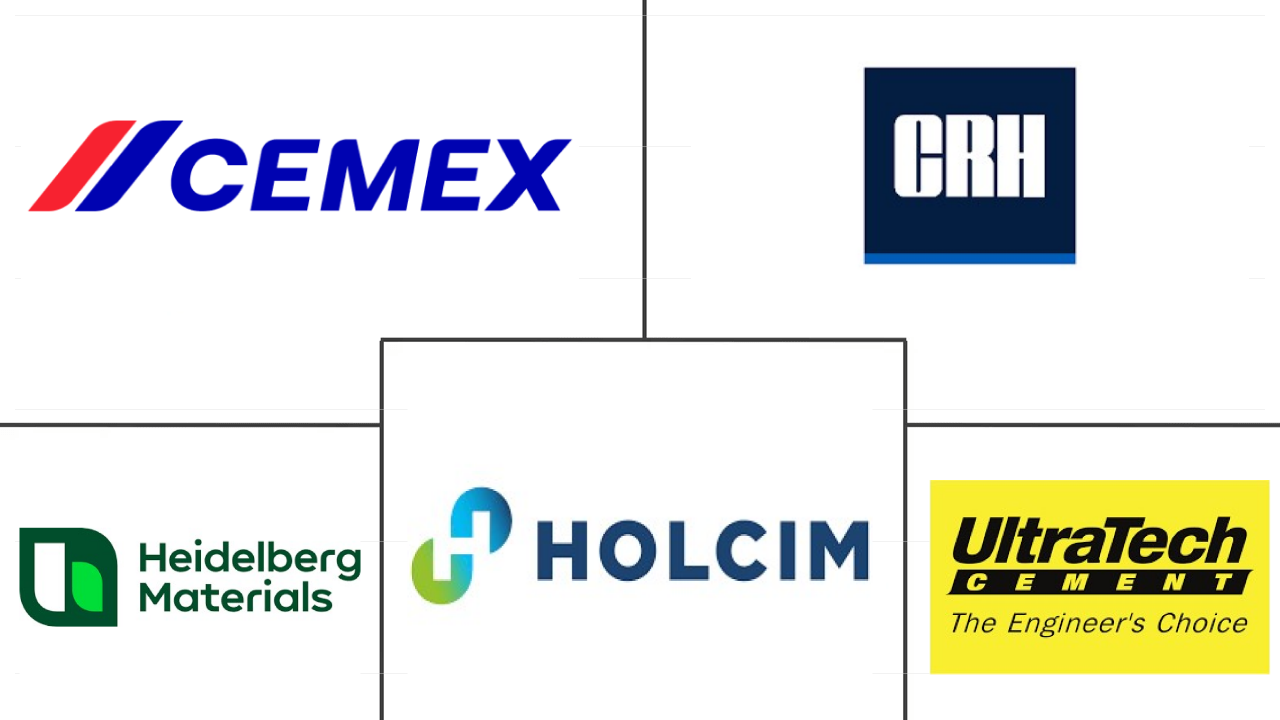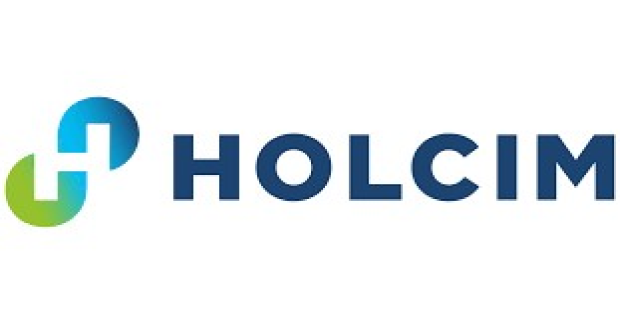Market Size of fiber reinforced concrete Industry
|
|
Study Period | 2018 - 2030 |
|
|
Market Volume (2024) | 124.31 Million Cubic meters |
|
|
Market Volume (2030) | 178.68 Million Cubic meters |
|
|
Largest Share by End Use Sector | Infrastructure |
|
|
CAGR (2024 - 2030) | 6.23 % |
|
|
Largest Share by Region | Asia-Pacific |
Major Players |
||

|
||
|
*Disclaimer: Major Players sorted in no particular order |
Fiber Reinforced Concrete Market Analysis
The Fiber Reinforced Concrete Market size is estimated at 124.31 million Cubic meters in 2024, and is expected to reach 178.68 million Cubic meters by 2030, growing at a CAGR of 6.23% during the forecast period (2024-2030).
124.31 Million
Market Size in 2024 (Cubic meters)
178.68 Million
Market Size in 2030 (Cubic meters)
4.23 %
CAGR (2018-2023)
6.23 %
CAGR (2024-2030)
Largest Market by End Use Sector
42.46 %
volume share, Infrastructure, 2023
Due to the escalating demand for infrastructure in developing economies, coupled with increasing consumption of fiber-reinforced concrete in major infrastructure projects, the infrastructure sector holds the largest share.
Fastest Market by End Use Sector
7.07 %
Projected CAGR, Residential, 2024-2030
With the growing usage of fiber-reinforced concrete for applications such as driveways, sidewalks, pool construction, basements, etc., the residential sector is projected to witness the fastest growth.
Largest Market by Region
46.20 %
volume share, Asia-Pacific, 2023
Due to high construction industrial activity in the region coupled with the increasing demand for fiber-reinforced concrete in countries like China, India, Japan, and South Korea, the region has dominated the market.
Fastest Market by Region
6.82 %
Projected CAGR, Asia-Pacific, 2024-2030
Due to growing investments in infrastructure projects, government initiatives, fast-paced urbanization, and industrialization, Asia-Pacific is expected to witness the fastest growth.
Leading Company
5.12 %
market share, Holcim, 2022

Due to the strong foothold in the construction industry offering a wide range of concrete products coupled with a strong distribution channel, the company has occupied the largest share.
Global infrastructure and residential construction sectors supported by government investments and renewed interest in PPPs are predicted to bolster the demand for fiber-reinforced concrete
- Global inflationary pressures, which have raised energy costs and prices of raw materials such as cement, led to a 2.03% volume decline in the global fiber-reinforced concrete market in 2022. However, in 2023, the market was poised for a rebound, with an anticipated growth of 6.15 million cubic meters. This resurgence can be attributed to governments across the world proposing measures to counter inflation's adverse effects and bolster the construction sector.
- In 2022, the global market for reinforced concrete in infrastructure construction claimed the lion's share at 47.19 million cubic meters. This dominance was fueled by a surge in private-public partnerships, a global trend aimed at bolstering infrastructure. The market was set to witness a notable uptick in 2023. With a rising emphasis on sustainable construction and heightened connectivity initiatives, such as road, airport, railway, and port enhancements, backed by government and private-public collaborations, global infrastructure spending was projected to surge by USD 2.7 trillion in 2023 compared to 2022. Consequently, the market is estimated to grow by 5.93% in volume during this period.
- The residential segment in the market studied is expected to register the fastest CAGR of 7.03% during the forecast period. This growth is underpinned by government investments targeting the construction of affordable homes, with a goal of accommodating 3 billion people by 2030. Also, affordable housing schemes and the rapidly growing population with higher disposable incomes and significant purchasing power will increase the demand for new housing units, and the new floor area for residential construction is expected to increase by 9.3 billion sq. ft in 2030 compared to 2022, raising the demand for fiber-reinforced concrete.
Rising investments in infrastructure in Asia-Pacific are likely to drive the demand for fiber-reinforced concrete
- In 2022, the global demand for fiber-reinforced concrete saw a decline of approximately 2.03%. This drop was primarily driven by reduced floor areas in residential and industrial and institutional new constructions. The global residential new floor area witnessed a 1.05% decrease in 2022 compared to the previous year. However, the market rebounded, with a growth rate of about 5.56% in 2023 over 2022.
- With a dominant share of about 45.43% in 2022, Asia-Pacific emerged as the largest consumer of fiber-reinforced concrete. This surge can be attributed to robust investments in infrastructure and a notable uptick in retail and office spaces. For instance, Indonesia has plans to shift its capital city from Jakarta to Borneo Island by 2045, backed by a hefty USD 32 billion investment. India's Grade A office market in its top seven cities is set to expand to a staggering 1 billion sq. f by 2026. With such developments, the fiber-reinforced concrete market in Asia-Pacific witnessed a substantial growth of about 59.13% by 2030 compared to 2023.
- Asia-Pacific is poised to maintain its momentum, emerging as the fastest-growing consumer of fiber-reinforced concrete. It is expected to register a robust CAGR of 6.86% during the forecast period. This surge can be attributed to the region's escalating demand for fiber-reinforced concrete, particularly in infrastructure and commercial construction. For instance, infrastructure spending in Asia-Pacific is projected to surge from USD 1.50 trillion in 2023 to USD 1.74 trillion by 2030. Thus, the demand for fiber-reinforced concrete is anticipated to witness a substantial uptick, amounting to an increase of 31.9 million cubic meters by 2030 compared to 2023.
Fiber Reinforced Concrete Industry Segmentation
Commercial, Industrial and Institutional, Infrastructure, Residential are covered as segments by End Use Sector. Glass Fiber, Natural Fiber, Steel Fiber, Synthetic Fiber are covered as segments by Product. Asia-Pacific, Europe, Middle East and Africa, North America, South America are covered as segments by Region.
- Global inflationary pressures, which have raised energy costs and prices of raw materials such as cement, led to a 2.03% volume decline in the global fiber-reinforced concrete market in 2022. However, in 2023, the market was poised for a rebound, with an anticipated growth of 6.15 million cubic meters. This resurgence can be attributed to governments across the world proposing measures to counter inflation's adverse effects and bolster the construction sector.
- In 2022, the global market for reinforced concrete in infrastructure construction claimed the lion's share at 47.19 million cubic meters. This dominance was fueled by a surge in private-public partnerships, a global trend aimed at bolstering infrastructure. The market was set to witness a notable uptick in 2023. With a rising emphasis on sustainable construction and heightened connectivity initiatives, such as road, airport, railway, and port enhancements, backed by government and private-public collaborations, global infrastructure spending was projected to surge by USD 2.7 trillion in 2023 compared to 2022. Consequently, the market is estimated to grow by 5.93% in volume during this period.
- The residential segment in the market studied is expected to register the fastest CAGR of 7.03% during the forecast period. This growth is underpinned by government investments targeting the construction of affordable homes, with a goal of accommodating 3 billion people by 2030. Also, affordable housing schemes and the rapidly growing population with higher disposable incomes and significant purchasing power will increase the demand for new housing units, and the new floor area for residential construction is expected to increase by 9.3 billion sq. ft in 2030 compared to 2022, raising the demand for fiber-reinforced concrete.
| End Use Sector | |
| Commercial | |
| Industrial and Institutional | |
| Infrastructure | |
| Residential |
| Product | |
| Glass Fiber | |
| Natural Fiber | |
| Steel Fiber | |
| Synthetic Fiber | |
| Other Types |
| Region | ||||||||||||||
| ||||||||||||||
| ||||||||||||||
| ||||||||||||||
| ||||||||||||||
|
Fiber Reinforced Concrete Market Size Summary
The fiber-reinforced concrete market is experiencing a dynamic phase, driven by a resurgence in demand following a period of decline due to global inflationary pressures and rising raw material costs. The market is poised for significant growth, supported by government initiatives aimed at countering inflation and stimulating the construction sector. The infrastructure segment has been a major contributor to this growth, fueled by increased public-private partnerships and a focus on sustainable construction. The residential sector is expected to register the fastest growth, driven by government investments in affordable housing to accommodate a growing population with rising disposable incomes. This trend is expected to continue, with substantial increases in new housing units and floor area anticipated over the forecast period.
Regionally, Asia-Pacific emerges as the largest and fastest-growing consumer of fiber-reinforced concrete, with robust infrastructure investments and a surge in commercial construction projects. The region's demand is bolstered by significant developments in countries like China and India, where large-scale projects are set to expand the new floor area for commercial construction. Meanwhile, Europe is witnessing a push towards high-energy-efficient buildings, aligning with carbon emission targets. The market is characterized by fragmentation, with major players like CEMEX, CRH, Heidelberg Materials, Holcim, and UltraTech Cement Ltd. actively expanding their operations through strategic acquisitions. These developments underscore the market's potential for growth and the increasing importance of fiber-reinforced concrete in global construction activities.
Fiber Reinforced Concrete Market Size - Table of Contents
-
1. MARKET SEGMENTATION (includes market size, forecasts up to 2030 and analysis of growth prospects.)
-
1.1 End Use Sector
-
1.1.1 Commercial
-
1.1.2 Industrial and Institutional
-
1.1.3 Infrastructure
-
1.1.4 Residential
-
-
1.2 Product
-
1.2.1 Glass Fiber
-
1.2.2 Natural Fiber
-
1.2.3 Steel Fiber
-
1.2.4 Synthetic Fiber
-
1.2.5 Other Types
-
-
1.3 Region
-
1.3.1 Asia-Pacific
-
1.3.1.1 By Country
-
1.3.1.1.1 Australia
-
1.3.1.1.2 China
-
1.3.1.1.3 India
-
1.3.1.1.4 Indonesia
-
1.3.1.1.5 Japan
-
1.3.1.1.6 Malaysia
-
1.3.1.1.7 South Korea
-
1.3.1.1.8 Thailand
-
1.3.1.1.9 Vietnam
-
1.3.1.1.10 Rest of Asia-Pacific
-
-
-
1.3.2 Europe
-
1.3.2.1 By Country
-
1.3.2.1.1 France
-
1.3.2.1.2 Germany
-
1.3.2.1.3 Italy
-
1.3.2.1.4 Russia
-
1.3.2.1.5 Spain
-
1.3.2.1.6 United Kingdom
-
1.3.2.1.7 Rest of Europe
-
-
-
1.3.3 Middle East and Africa
-
1.3.3.1 By Country
-
1.3.3.1.1 Saudi Arabia
-
1.3.3.1.2 United Arab Emirates
-
1.3.3.1.3 Rest of Middle East and Africa
-
-
-
1.3.4 North America
-
1.3.4.1 By Country
-
1.3.4.1.1 Canada
-
1.3.4.1.2 Mexico
-
1.3.4.1.3 United States
-
-
-
1.3.5 South America
-
1.3.5.1 By Country
-
1.3.5.1.1 Argentina
-
1.3.5.1.2 Brazil
-
1.3.5.1.3 Rest of South America
-
-
-
-
Fiber Reinforced Concrete Market Size FAQs
What is the current Global Fiber Reinforced Concrete Market size?
The Global Fiber Reinforced Concrete Market is projected to register a CAGR of 6.23% during the forecast period (2024-2030).
Who are the key players in Global Fiber Reinforced Concrete Market?
CEMEX, S.A.B. de C.V., CRH, Heidelberg Materials, Holcim and UltraTech Cement Ltd. are the major companies operating in the Global Fiber Reinforced Concrete Market.

